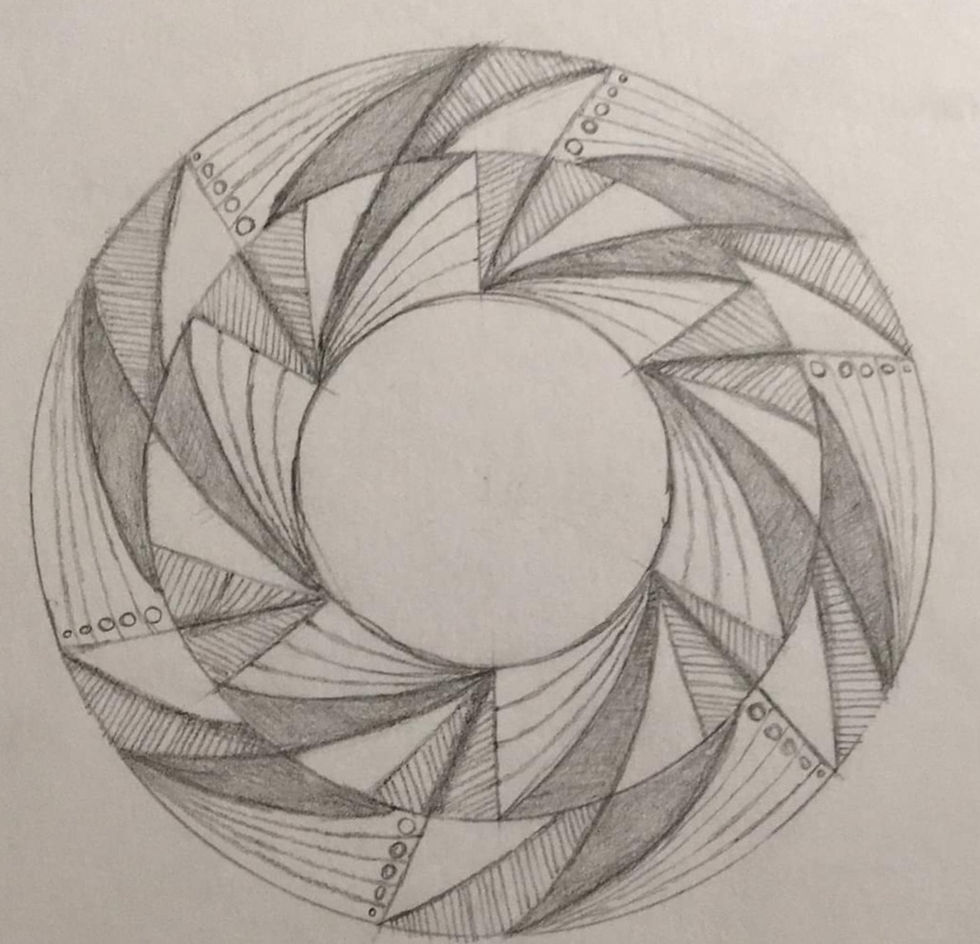Shakti explained
- Almog Yarden
- May 5, 2021
- 2 min read
Updated: Feb 25, 2023

Just what is shakti?
In Hinduism, Shakti is the feminine aspect of the divine force and is frequently personified as the supreme mother deity. It is regarded as an impersonal, unrestricted energy that can be attained through tantric practices to empower oneself. Shakti, which can be felt individually and cosmically, is described as sexual, sensual, fierce, and possessive.
She appears as a personal force that infuses the practitioner's energy body with Kundalini, making him a demi-god.
Kundalini denotes both wheel and circulation in Sanskrit. So, technically speaking, it is an energy that is in motion and can be channeled for personal empowerment.
Kundalini can be accessed and used in a variety of ways.
Examples of methods to accomplish that goal include Kriya, Hatta, Joga, and Tantra.
Kriya yoga calls for an astral implant from a master and employs pranayama (pranic breathing).
After being transmitted, it rests at the base of the spine and functions as a Kundalini battery and generator.
The second implant rite produces the astral body, and the third brings the Kundalini and Shakti together.
Hatta yoga is the one most westerners know about, as the system utilizes a set of energy nods in the subtle body called chakras.
Within this system, Initiation and implants are necessary for activating and aligning the chakras to certain currents.
It combines physical exercise, mantras, pranayama, and Ayurvedic medication.
Why the use of ayurvedic medications?
Because Hatta is unnatural and harmful to the body, ayurvedic medicine is neccery to repair the body through the process.
The particular lineage that transmits the implants will decide the frequency of Kundalini in both systems.
Joga is a hands-on technique to control energy currents; it is the means of an absolute will.
It awakens, enhances, and settles the Kundalini and combines tantric practices like tantric sex, intoxication, mantras, and images of particular patterns called yantras and Bhakti (devotion).
The Kundalini becomes personified as a specific deity through the practice of Bhakti (devotion), which affects the frequency and power of the Jogi.
These are just a few of the personified manifestations of Shakti, including Kali, Durga, and Chamundani.
What is an Isht?
An "Isht" is a deity that stands in for Kundalini as a personal representation and greatly influences the result.
The goal of total oneness with the Isht is strongly psychically connected to the development of such an intimate friendship.
Generally, a sadhu must first "know oneself" before making a choice.
Not to fear, though. As long as the Kundaili operates at low voltage, it is generally safe to experiment with different personifications.
Sister, partner, mother, and lover.
Each of those representations of the inner deity as the Kundalini has a profound psychological impact.
It is up to the practitioner to form it, making it a very personal and intimate bond.
The "Isht possesses the Jogi," the Kundalini anthropomorphized and animated, who then fuses with him to create a symbiotic relationship and take control of the manifestation of power.
The practitioner can perform the second portion of this Tantra once Kundalini has been stabilized as two parallel running circular currents (Kundal in Sanskrit).
Then there is an alignment of the 'Isht' with Mahadevi, the macrocosmic masculine principle.
Tantra has many levels, beginning with offerings of flowers and incense at the feet of the goddess and evolving to radical practices such as drinking menstrual blood and consuming human flesh.
Everything from Shakti Joga to Agora tantric Joga is about developing one's strength of character and dedication.



Comments